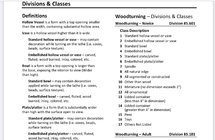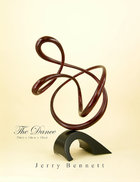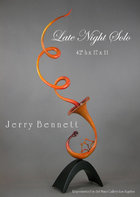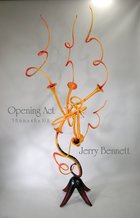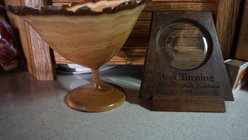It APPEARS to me that much of the carving does not require a great starting point, and a talented carver can make some corrections. Typically The carved pieces use a relatively simple turning as the “canvas”, as the carving is the “show”, with much or the original form carved away. This can affectively “hide” a mundane form and turning skill set.
On the other hand, piercing effectively increases the need for good form and control of wall thickness, elevating the turning skill requirement vs a “standard” piece.
You’re right in that carving can be used to hide a poor form, for sure. But that poor form would likely come through in the end (or would require a ton of sanding to mitigate). I agree with you that if a sculptor, for example, only used the lathe to round the blank, then the carving is, for sure the most prominent skill and the turning is negligible. That said, the lathe will get them in the round much more accurately and quickly than by hand/eye. Carving at the top levels still require even thickness, good form, and generally exceptional turning. If the goal is to be two notches down, well…that’s not a good enough goal.

I would still argue that piercing is a completely separate skill than turning. There is absolutely no need for the lathe if you want to pierce. Just use an angle grinder or burrs to thin the wall as needed. (I’m just being very black and white, and of course recognize the fact that thin, even wall thickness will make piercing easier or even possible). But, I can turn the absolute best thin hollowform and still mess it up when I go to pierce. Different skill set (for the sake of my point).
What if I already struggle to develop turning skills, and now I need to develop carving skills, which I already tried and suck at (or don’t like)? If mundane turned items with average carving or pyrography (pick your non turning art form) art get the attention over excellently turned forms, the message is be avg at different things vs great at one.
That a good and relevant point. I suppose it’s up to the individual though. Form trumps all, for sure, and if you’re starting with a turned form it better be spectacular. I think we agree on that. To some degree, excellent carving might make up for poor form, but those in the know will likely recognize that. Now, the general public, who knows.
I will also say that it is probably incredible difficult these days to make a name for yourself if you’re just turning (without other skills involved, and with some exceptions of course). I know this is part of the point you’re making. A ton of folks turn really well. Fewer folks turn AND carve really well. Even fewer turn, carve, and woodburn well. Even fewer turn, carve, woodburn, and paint really well. And so forth. It’s probably unlikely that someone will be a master at all of these skills without much much concerted effort. But, if you’re just average at one or the other, you better hope the other skills are good enough to compensate.
These are all different skillsets, for sure. And they don’t transfer easily, I agree. And IF there is a traditional woodturning completion somewhere, it might not be fair to put a basic turned bowl against an embellished bowl. But for most shows where you’re going for “people’s choice”, “best in show”, or even to jury into a more prestigious show, then it might be near impossible to do so without multiple skillsets. (And again, I know this close to the point you’re making).

